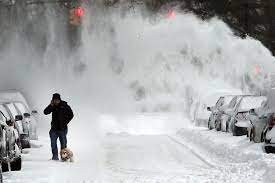Whenever you put a piece of dry ice in water, smoke comes out of it. Or if you have ever seen a block of ice, then smoke will be seen coming out of it. It is not fog or carbon dioxide, but something else.
Something like thick smoke comes out of the snow or ice cubes kept outside. In fact, this smoke is not a gas but a vapor that accumulates around it due to the coldness of the ice. When the air around the ice becomes colder, some of the vapor from it turns into water droplets. The frozen vapor looks like smoke in a gust of wind.
Water exists in three states solid, liquid and gas. Water is called ice when it is solid, water when it is liquid, and steam when it is in gaseous state. The H2O molecules in the ice are firmly bonded to each other. They are interconnected with a little less strength in the liquid state and even less strongly in the gaseous state. In the gaseous state, the molecules of H2O have more energy, due to which they are in the kinetic state.
When water is below a certain temperature, it takes the form of ice. Water is in the state of gas in the air, when the air touches the surface of the ice, it starts coming out in the form of small droplets which we see as steam. Water exists in the gaseous state in the air. When the wind touches the surface of the ice, the water present in the air, which was in the gaseous state, turns into microscopic water droplets. We see those tiny droplets in the form of steam.
 Indian Thought Latest News & Views
Indian Thought Latest News & Views



